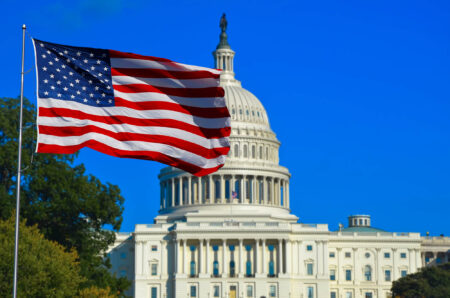After the fall of Terra, the hesitation and fears towards stablecoins have grown again. As a result, many stablecoin providers are facing stricter regulations in the industry. Both America and the EU are following the developments in the crypto sector with great interest in order to react to current events.
Stablecoins have been with us since 2014, when Tether (USDT) was created. They have facilitated the operations of cryptomarkets and recently in Decentralised Finance (DeFi) ecosystems, and have tried to improve on the inefficiencies of the fiat (cross-border) payment system (Libra/Diem). Stablecoins have attracted regulatory interest since 2019. Some of the consequences of that involvement include a strong push to develop CBDCs, the creation of the category of Global Stablecoins (GSC), and related regulation.
In this chapter, we define stablecoins, propose a taxonomy, and list the main use cases. We then review the Libra project, emphasising how it acted as a wake-up call for regulators - with reactions that eventually led to the demise of the project. We recall regulatory initiatives from national and international regulators that have followed that event. At the end we speculate about the way forward for stablecoins and their regulation.
In fact, what are stablecoins?
In general terms, stablecoins are digital units of value. What distinguishes stablecoins is that a set of arrangements is in place to peg their prices to the price of a reference asset (for instance, a full collateralisation by a reference asset such as a fiat currency). We distinguish between three different kinds of stablecoins.
- Off-chain stablecoins, such as USDT, USDC, and BUSD. These stablecoins are issued by a centralised entity against assets such as fiat deposits, securities, or cryptoassets. These assets act as collateral to the stablecoins and guarantee their redeemability. The full fiat backing and its disclosure provide confidence in the stability of the coin.
- On-chain stablecoins, such as DAI and MIM. These stablecoins are issued against cryptoassets on the blockchain by decentralised protocols. The cryptoassets act as collateral to, and guarantee the redeemability of the stablecoins. The nature and level of the cryptoasset backing provide confidence in the stability of the coin.
- Algorithmic stablecoins, such as UST. These stablecoins rely on a set of smart contracts managing the supply of the stablecoins in defence of the peg. Algorithmic stablecoins are generally not collateralised nor are they redeemable. The confidence of their users in the sustainability of the stabilisation arrangement provides confidence in the stability of the coin.
Use cases of stablecoins
The use cases for stablecoins are strong. Some use cases are well-established; others have not yet been fully addressed.
The most important and oldest use case for stablecoins is to facilitate cryptoasset trading. Only a small fraction of cryptoassets can be traded against fiat. The large majority are traded against stablecoins. Tether is the oldest stablecoin and was introduced in 2014. It went through some difficult regulatory challenges that it seems to have weathered. The second most important but relatively recent use case for stablecoins relates to DeFi. Stablecoins enable the provision of all financial services offered in the DeFi environment (payments, lending, asset management, trading, derivatives). UST was a leading stablecoin in the DeFi world.
The potential game-changing use case for stablecoins is in the traditional world of slow, expensive, opaque, and insufficiently inclusive fiat (cross-border) payments. These limitations have been pointed out very clearly by the G20, who made their resolution a priority in 2020. Libra was an attempt to improve on those insufficiencies.
Libra as a regulatory wake-up call
Facebook’s Libra stablecoin was designed to improve on the insufficiencies of the current cross-border payment system. Regulatory reactions led to the acceptance of the concept of stablecoins, but also to the demise of project Libra.
Facebook launched project Libra on 18 June 2019, as a token on a permissioned blockchain, issued by the Libra Association, backed by a basket of fiat currencies, and acting as an international payment instrument available to (onboarded) Facebook users.
The announcement came as a surprise to key international regulatory policy bodies and national regulators. They realised that, if Libra were to be successful on the back of nearly three billion Facebook users globally, that token could affect the structure of the international payment system and the effectiveness of monetary policies. It could also challenge financial stability, consumer and investor protection, data privacy, and Anti-money Laundering (AML)/Combating the Financing of Terrorism (CFT) efforts.
Regulators reacted immediately with an open mind but not with open doors. The chain of reactions culminated with the G7 task force declaration on 14 October 2019 that Libra would not proceed until it was proven safe and secure. The declaration BIS3 recognised the problems affecting international payments that Libra set out to address, and made a strong call to Central Banks globally to develop CBDCs. It also led the Financial Stability Board (FSB) to develop guidelines for the issuance of a specific category of stablecoins, the GSC. Eventually, these reactions made it impossible for Libra to proceed. Libra, then renamed Diem, was eventually abandoned in January 2022.
EU and Switzerland were one of the first
Two jurisdictions in europe stand out for having provided, or initiated the process to provide, a regulatory framework for stablecoins. Noteworthy, algorithmic stablecoins have either been excluded or have not been considered for reasons that relate to the riskiness of such mechanisms and the non-applicability of laws and regulations to such constructs, except AML requirements.
The Swiss Financial Market Supervisory Authority (FINMA) announced its position on Libra on 11 September 2019 (the Libra Association was incorporated in Switzerland). To operate the GSC, Libra would need a payment system license incremented by prudential regulatory requirements in the context of an internationally agreed regulatory coordination. For non-GSC, FINMA issued a supplement to its Initial Coin Offering guidelines, stating that the specific regulatory requirements would differ on a case-by-case basis, depending on the underlying exposure of the ‘stable coin’ (e.g. currencies, commodities, real estate, or securities) and the legal rights of its holders. AML, securities trading, banking, fund management, and financial infrastructure regulation would all be of potential relevance. Switzerland offered a clear regulatory framework for stablecoins.
In the EU, the Digital Finance Package issued by the European Commission on 24 September 2020 included proposals for stablecoins and for GSC. The issuance of stablecoins will be subject to the authorisation of the issuer by the competent authority of the relevant member state. A whitepaper describing governance arrangements, approach to reserves and custody, investment policy, and nature and enforceability of the rights for coin holders will be mandatory. A GSC will be subject to the European Banking Authority supervisory responsibilities and to additional obligations affecting custody and the management of liquidity. Algorithmic stablecoins are excluded from this proposed legislation. The legislation is scheduled to be finalised and implemented in 2024.
The United States and England regulated the sector as well
On 7 January 2021, the UK became the third jurisdiction in europe to address stablecoins, when the government released a consultation paper that proposed an authorisation regime for stablecoins. It proposed to include in the authorisation regime stablecoins that can be used reliably for retail or wholesale transactions and that achieve a stable peg to assets such as single currency, multi currencies, or gold within the scope of the regulation. The regulatory requirements would extend to the organisation, operation, and governance of the stablecoin arrangement. Global stablecoins would be subject to additional requirements, whereby existing cryptoasset regulation would be leveraged and extended to cover stablecoins to the extent possible. Algorithmic stablecoins were excluded from the proposed authorisation regime.
On 2 November 2021, the US Treasury released a report on stablecoins that recognises that, if well-designed and appropriately regulated, stablecoins can support faster, more efficient, and more inclusive/beneficial payments options. The report enlarges on the risks of stablecoins and provides recommendations for mitigating these risks. Risks relate to market and financial integrity, investor protection, and illicit use. The report recommends that the US Congress enact legislation to ensure that stablecoins and their arrangements are subject to a federal prudential framework on a consistent and comprehensive basis. Algorithmic stablecoins are excluded from the recommendation. The White House Executive Order on Ensuring Responsible Development of Digital Assets, issued on 9 March 2022, instructs the relevant authorities to address illicit finance risks posed by stablecoins and to continue to support the G20 roadmap for achieving well-regulated stablecoin arrangements for cross-border payments.
Outlook for the future
In perspective, regulators have initially cared more about the fiat use case for stablecoins (see Libra and reactions) than the cryptomarket use case. As cryptomarkets grew, however, the impact on investors and potential spillovers into traditional finance attracted regulatory attention. Tether came under regulatory pressure in late 2017, began to disclose its reserves in 2021, and was able to settle a class action suit issued by the US District Court for the Southern District of New York on 29 September 2021.
The regulatory reactions to the UST fall are far-reaching. Algorithmic stablecoins will be marginalised and disincentivised. Fiat backed stablecoins will be increasingly subject to bank-like compliance operating requirements. The use cases for stablecoins are strong, both with reference to cryptomarkets and in connection with fiat-based payment system, and will not disappear. The BIS has introduced an interesting perspective by proposing private/public collaborations centred around CBDCs. Private initiatives designed and developed as fully compliant with financial regulations and regulatory expectations will have better business chances than other initiatives that are not compliant.








